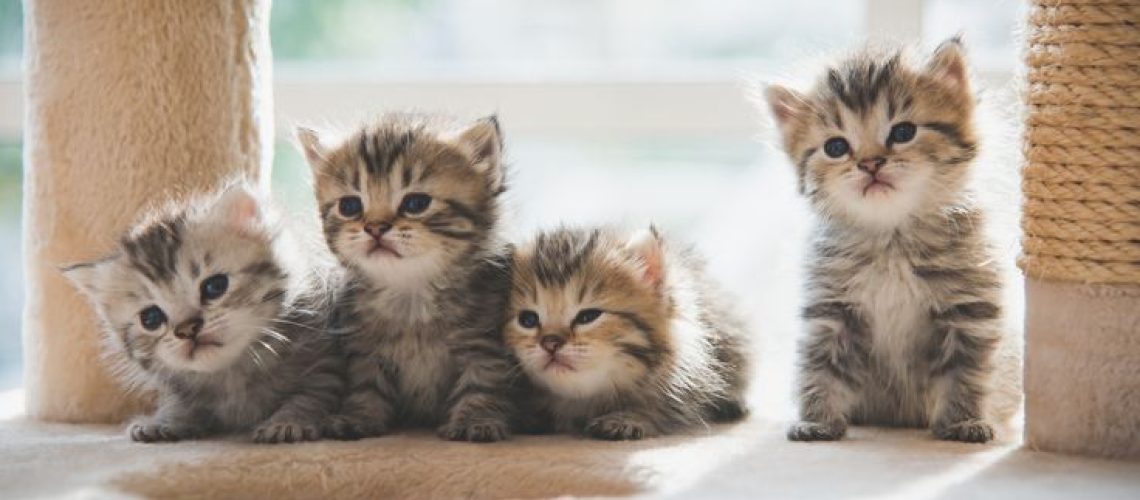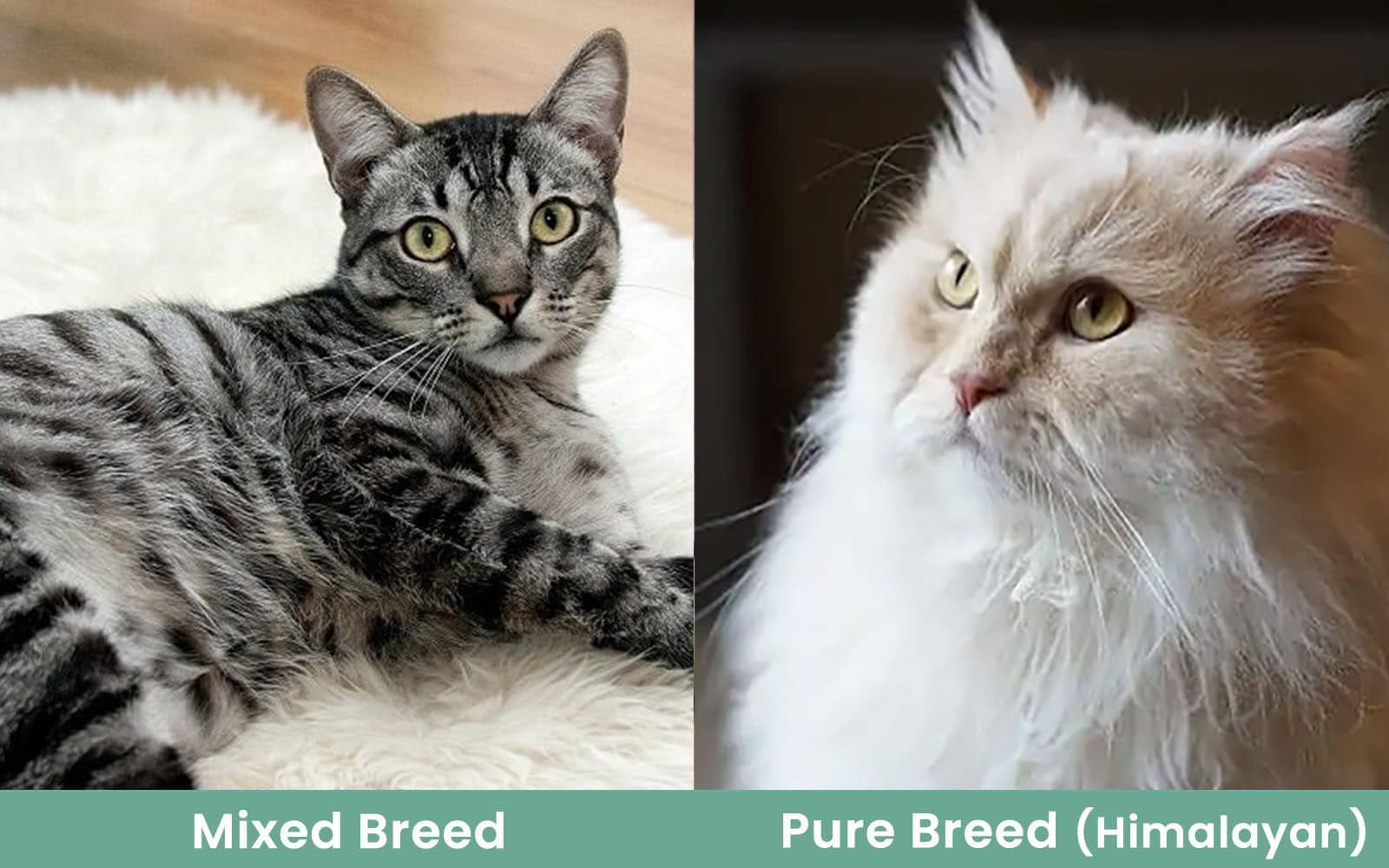Are you curious about your feline friend's ancestry? By exploring this topic, you'll gain a deeper appreciation for your cat's unique traits and quirks. So, let's embark on this captivating journey together and discover if your beloved pet is a pure breed or an enchanting mix of diverse lineages.
Key Takeaways:
- Understanding the difference between purebred and mixed breed cats can help determine their genetic background.
- Purebred cats have a documented lineage and conform to specific breed standards, while mixed breed cats have a more diverse ancestry.
- Physical traits, such as coat color and pattern, can provide clues about a cat's breed, but DNA testing is the most accurate method for determining their heritage.
- Knowing your cat's breed can help anticipate potential health issues or behavioral traits associated with certain breeds.
- Regardless of breed, all cats deserve love and care, and their unique personalities are what make them special regardless of their genetic makeup.
Understanding the Difference: Pure Breed vs. Mixed Breed Cats
What is a pure breed cat?
A pure breed cat is a cat that comes from a specific breed and has parents who are also from that same breed. These cats have certain physical characteristics and traits that are unique to their breed. For example, Siamese cats have blue eyes and short hair, while Maine Coon cats are known for their large size and long fur.
What is a mixed breed cat?
A mixed breed cat, also known as a domestic shorthair or domestic longhair, is a cat that comes from two or more different breeds. These cats often have a unique combination of physical characteristics from each of their parent breeds. This can make them look very different from one another and adds to the diversity of the feline population.
Determining if Your Cat is a Pure Breed or a Mix
Physical characteristics to look for in pure breed cats
Pure breed cats have specific physical traits that are characteristic of their breed. For example, Persian cats have long, fluffy fur and flat faces, while Abyssinian cats have short coats with ticking patterns. By observing your cat's appearance and comparing it to the standards for different breeds, you can get an idea of whether your cat is a pure breed or not.
Using DNA testing to determine your cat's breed
If you're unsure about your cat's ancestry or want more precise information about its breed, you can consider using DNA testing. DNA tests for cats work similarly to those for humans - you collect a sample (usually through a cheek swab) and send it to a laboratory for analysis. The lab will then compare your cat's DNA to its extensive database of known breeds to determine which ones are present in your cat's genetic makeup.
Common Behaviors and Traits of Pure Breed Cats
Personality traits of pure breed cats
Different breeds of cats have different personality traits. For example, Siamese cats are known for being vocal and demanding attention, while Ragdoll cats are typically calm and affectionate. Understanding the typical behavior patterns of your cat's breed can help you better care for and interact with your feline friend.
Health issues associated with certain pure breed cats
Some pure breed cats are more prone to certain health issues compared to mixed breed cats. For example, Persians are known to have a higher risk of developing respiratory problems due to their flat faces, while Maine Coon cats may be more susceptible to hip dysplasia. It's important to be aware of these potential health concerns and take appropriate measures to keep your cat healthy.
Advantages and Disadvantages of Owning Pure Breed or Mixed-Breed Cats
Advantages of owning a pure breed cat
- Predictable traits: With a pure breed cat, you can have a good idea of what their appearance, temperament, and behavior will be like based on the characteristics of their breed.
- Breed-specific knowledge: Pure breed cats often have specific needs or requirements that owners should be aware of. By knowing the traits and tendencies of your cat's breed, you can provide better care and meet their specific needs.
Advantages of owning a mixed-breed cat
- Unique appearance: Mixed-breed cats often have unique and interesting physical characteristics that make them stand out from other cats.
- Genetic diversity: Mixed-breed cats tend to have a more diverse genetic background, which can make them less prone to certain inherited health conditions.
Tips for Caring for and Maintaining the Health of Your Cat, Regardless of its Breed
Regular veterinary check-ups
Taking your cat for regular check-ups with a veterinarian is important to ensure their overall health and catch any potential issues early on. Vaccinations, dental care, and parasite prevention are all essential parts of maintaining your cat's well-being.
Proper nutrition
Feeding your cat a balanced and nutritious diet is crucial for their health. Different breeds may have specific dietary requirements, so it's important to choose a cat food that meets those needs. Consult with your veterinarian to determine the best diet for your cat.
Providing mental and physical stimulation
Cats need both mental and physical stimulation to stay happy and healthy. Provide toys, scratching posts, and interactive playtime to keep them engaged and prevent boredom. Regular exercise is also important to maintain their weight and prevent obesity-related health issues.
By following these tips, you can ensure that your cat remains healthy and happy, regardless of whether they are a pure breed or a mixed-breed.

Advantages and Disadvantages of Owning Pure Breed or Mixed-Breed Cats
Pure Breed Cats
Pure breed cats are known for their predictable traits and characteristics. These cats have a long lineage of ancestors with similar physical and behavioral traits, making it easier to anticipate their needs and preferences. For example, if you are looking for a cat that is more likely to be friendly and affectionate, certain pure breeds like the Ragdoll or the Maine Coon might be a good choice. Additionally, pure breed cats often have specific grooming requirements, which can be helpful if you enjoy spending time grooming your feline companion.
However, owning a pure breed cat also has its disadvantages. One major drawback is the potential health issues associated with selective breeding. Some pure breeds are prone to genetic disorders or inherited diseases due to limited gene pools. This means that you may need to invest more time and money in veterinary care for your pure breed cat compared to a mixed-breed cat.
Mixed-Breed Cats
Mixed-breed cats, also known as domestic shorthairs or domestic longhairs, come from various backgrounds and do not have a specific breed lineage. One advantage of owning a mixed-breed cat is their generally robust health. Due to their diverse genetic makeup, they tend to have fewer inherited health problems compared to pure breeds.
Another advantage is their unique appearance and personality. Mixed-breed cats often exhibit an interesting combination of traits from different breeds, making them truly one-of-a-kind companions. They come in all shapes, sizes, colors, and patterns, so you can find a mixed-breed cat that matches your personal preferences perfectly.
However, it's important to note that predicting the exact temperament or physical characteristics of a mixed-breed cat can be challenging since they don't follow specific breed standards. This unpredictability can make it harder to anticipate their needs and behaviors compared to pure breed cats.
Tips for Caring for and Maintaining the Health of Your Cat, Regardless of its Breed
Nutrition
Proper nutrition is essential for maintaining your cat's overall health and well-being. Ensure that you provide a balanced diet that meets their specific nutritional needs. Consult with your veterinarian to determine the appropriate type and amount of food for your cat based on their age, weight, and any specific dietary requirements they may have.
Feeding Schedule
Establishing a consistent feeding schedule is crucial for your cat's digestive health. Divide their daily food portions into multiple small meals throughout the day rather than leaving food out all the time. This helps prevent overeating and obesity while also mimicking their natural hunting behavior.
Hydration
Cats need access to fresh water at all times. Provide clean water in a separate bowl from their food, as some cats prefer not to drink near their eating area. Consider using a water fountain or adding wet food to their diet to increase water intake, especially if your cat tends to be less interested in drinking plain water.
Grooming
Regular grooming sessions are essential for keeping your cat's coat healthy and preventing matting or skin issues. Brush your cat's fur regularly, especially if they have long hair, to remove loose hair and prevent hairballs. Additionally, check their ears for any signs of infection or excessive wax buildup, trim their nails regularly, and brush their teeth to maintain good oral hygiene.
Remember, regardless of whether you own a pure breed or mixed-breed cat, providing them with love, attention, regular veterinary care, and a stimulating environment will contribute greatly to their overall happiness and well-being.
In conclusion, determining if your cat is a pure breed can be challenging. It is important to consider physical traits, pedigree records, and professional opinions from experts to make an accurate assessment. Remember, regardless of breed, all cats deserve love and care.
How do I know if my cat is purebred or mixed?
If you want to accurately determine the breed of your cat, you can utilize a cat DNA test. These kits analyze the DNA of your cat, which is collected through a cheek swab, and provide detailed information about its genetic background and lineage.
What is pure breed cat?
According to The Cat Fanciers Glossary, a purebred cat is defined as a cat whose lineage consists of the same breeds or includes crossbreeding that is permitted within the breed's standards. This definition was provided on January 24, 2019.
What percentage of cats are mixed breed?
The majority of cats in America, around 90-95%, are domestic mixed-breeds. These cats are popular because they are noble, friendly, and each one is unique. They are a great choice for any household.
Do cats have mixed breeds?
Over time, mixed breed cats have been known by various names such as domestic cat, house cat, and moggie (a term commonly used in the U.K.). What distinguishes these cats from other breeds is that they are not officially recognized as a specific breed.
What does a mixed breed cat look like?
Mixed-breed cats have the potential to exhibit a wide range of colors and patterns, similar to those found in purebred cats. Additionally, they can have varying coat lengths and come in both small and large sizes.
Are tabby cats purebred?
Is a tabby cat considered a purebred? No, tabby is not a specific breed but rather a coat pattern that can be found in both purebred and mixed-breed cats. Tabby cats are often referred to as domestic short- or long-haired cats. The classic tabby pattern features dark markings in either a blotched or swirled pattern over a lighter coat color. This information was last updated on April 27, 2022.

















